The 12 Best Horse Photography Tips and Tricks
As a photographer, odds are you’ve encountered a situation outside your normal regimen. Horse photography is likely one of those areas. Although we have an idea of what this involves, an opportunity to photograph horses sometimes arises by chance.
It’s important to stay professional and know a few standard techniques when taking shots of horses. Below are some beautiful horse photography tips and tricks for your photoshoot. These will help you better understand the art and how it differs from other types of photographic niches. Let’s take a look.
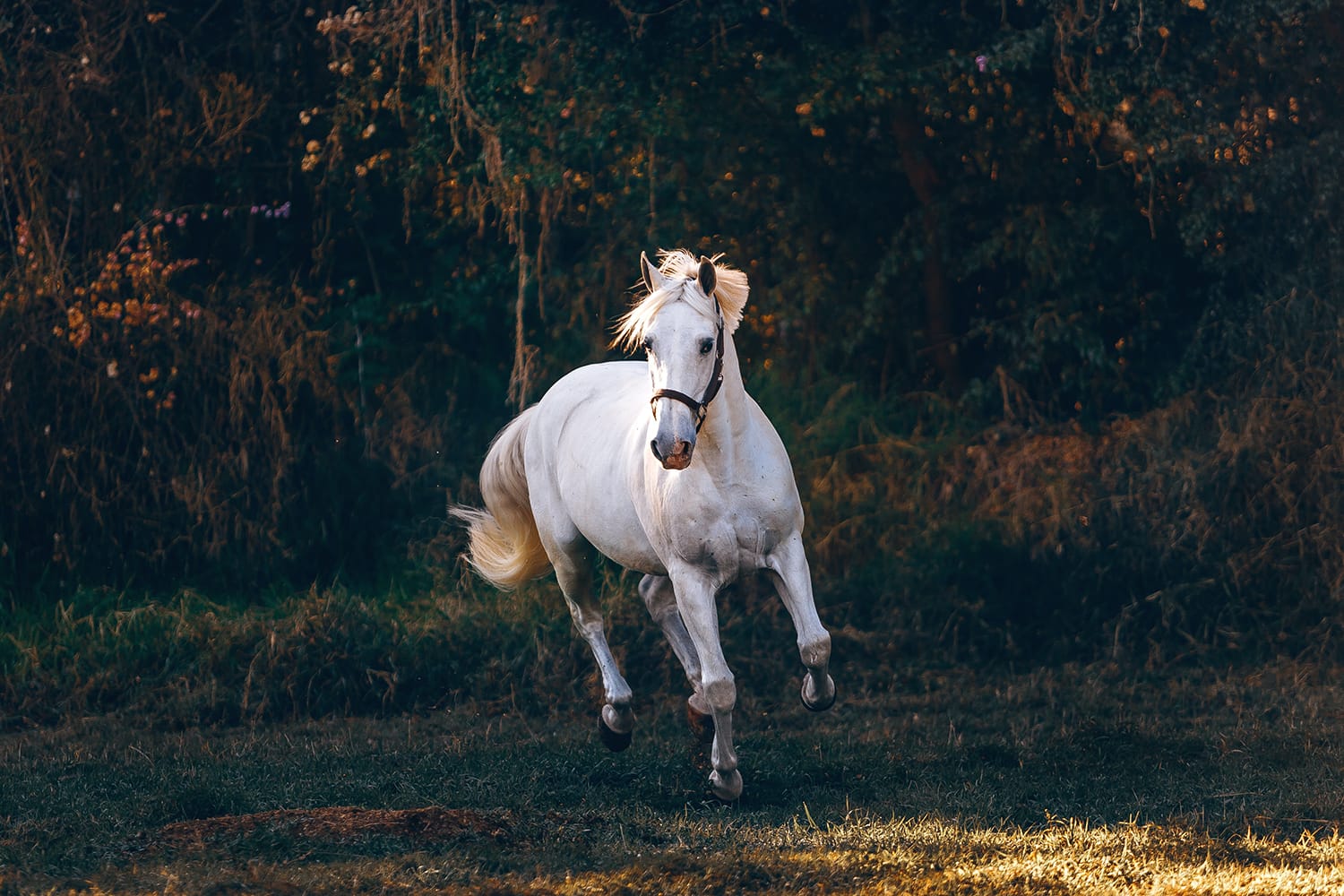
1. Understand Horse Psychology
Beautiful horse photography is an endeavor that has captured the imagination of photographers for generations. Horses have an air of wild mystery and confidence that has persisted throughout time, even though most of the horses we’re likely to encounter in our modern lives have been domesticated.
As photographers, we often need to make a strong connection with our subjects to get great results. Whether it’s photographing friends, family, or strangers, making subjects feel comfortable is often the best first step to creating compelling images.
This idea is also a natural component of animal photography and relevant to the challenges and rewards that define how to best photograph horses.
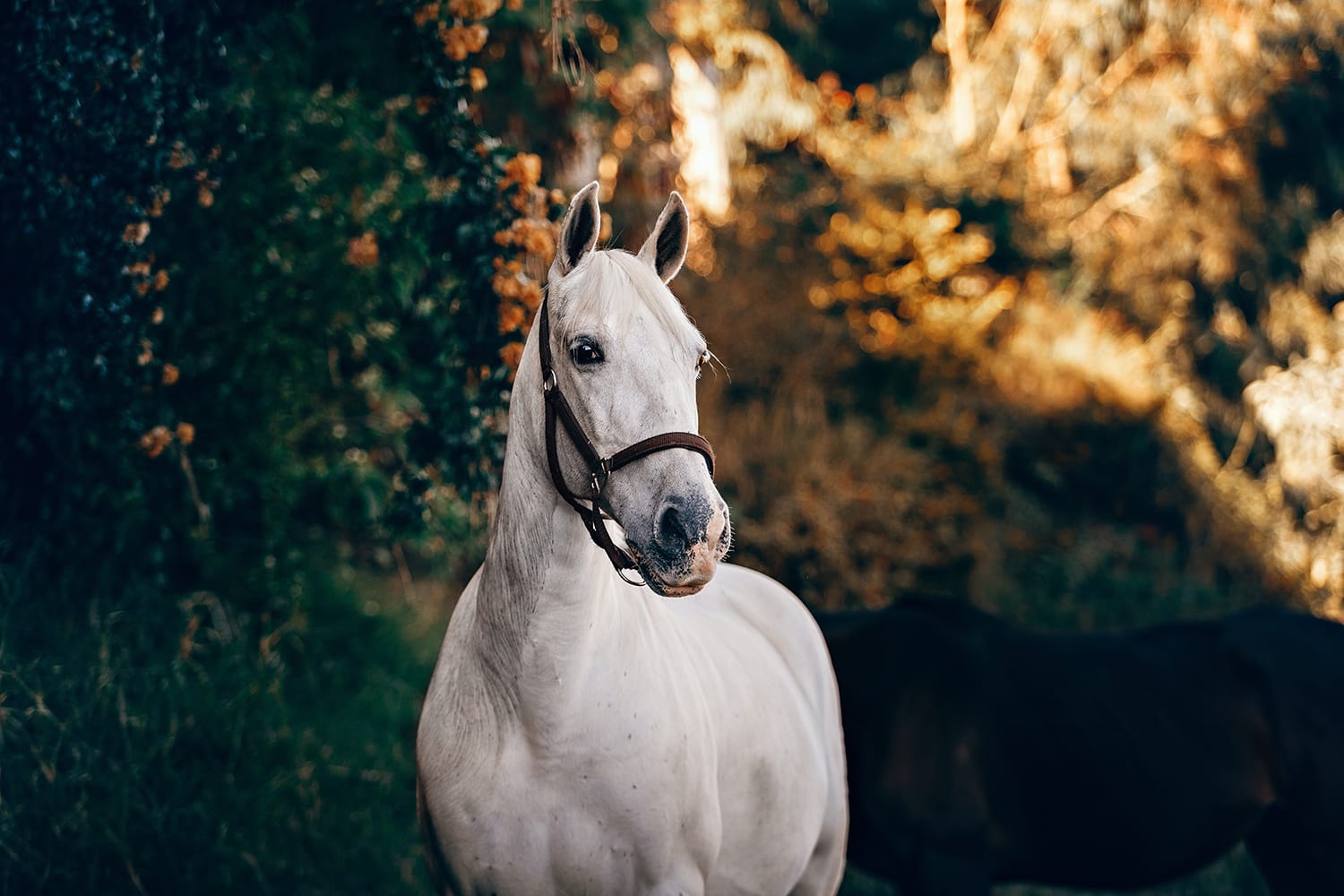
2. Choose the Right Outdoor Location: Bring Your Mobile Studio to the Horse
We live in a time where photographing horses has been made easier thanks to skilled equestrian riders, expert guides, and reliable transportation. When planning a photo shoot with a horse or using a horse as part of an existing photographic concept, you have the privilege of choosing an outdoor location.
It’s best to choose an area with a decent amount of space both to accommodate the horse and give you ample room to shoot. Any pasture, field, forested glade, or backcountry road will work, given that you’ve created enough of a safe distance between yourself and your subject.
If rule number one in horse photography is making sure that the horse feels comfortable, rule number two is making sure that you as the photographer feel comfortable.
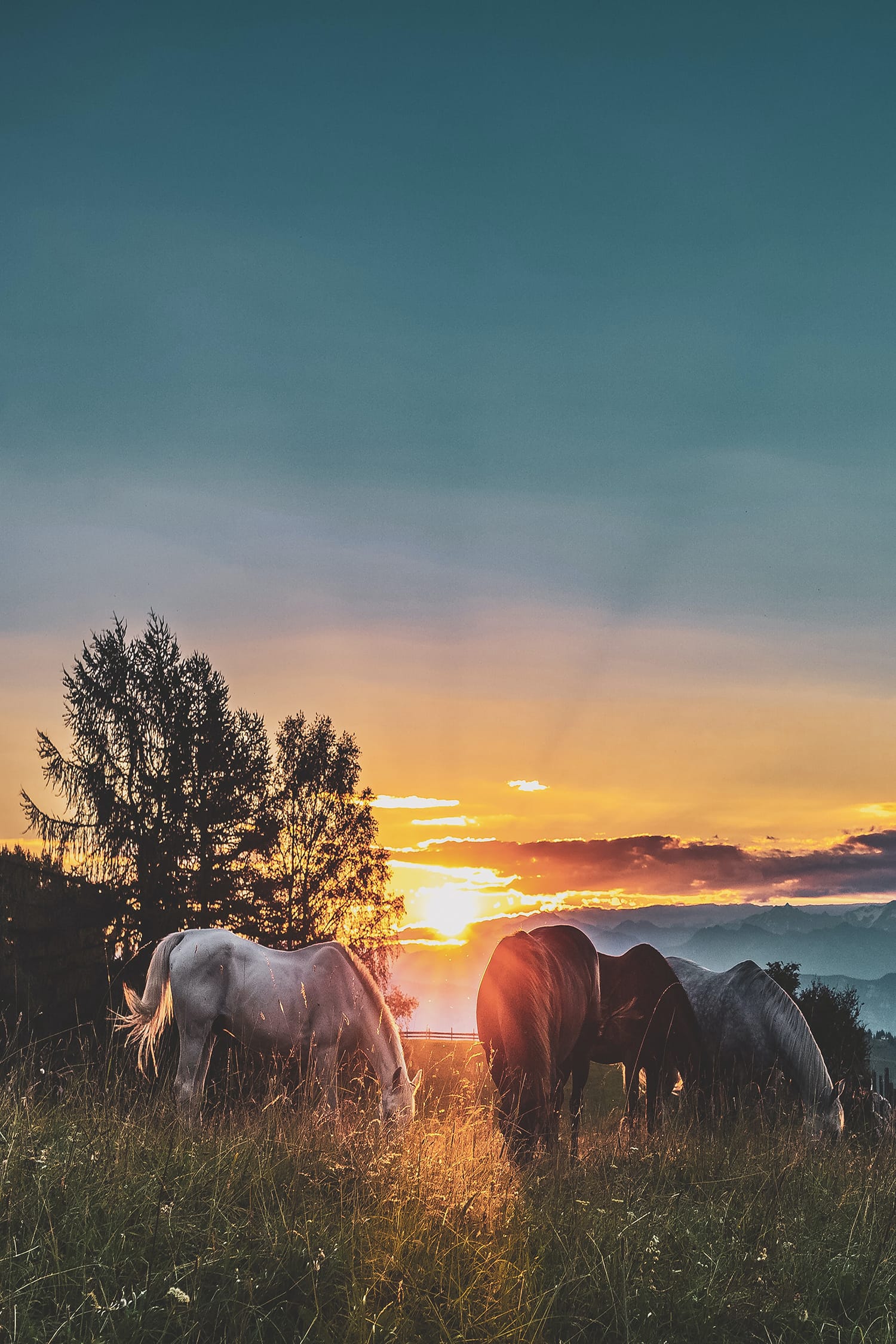
3. Stay Safe During Horse Photography
As anyone who has photographed animals can tell you, staying safe is an important part of the shoot. This is especially true with larger animals like horses, which can react and behave in ways that you may be unaccustomed to.
Make sure that you keep your line of communication open with the horse’s trainer before, during, and after the shoot for directions and feedback. Maintain a safe distance from the horse and keep your mannerisms light to avoid spooking or scaring the horse on set.
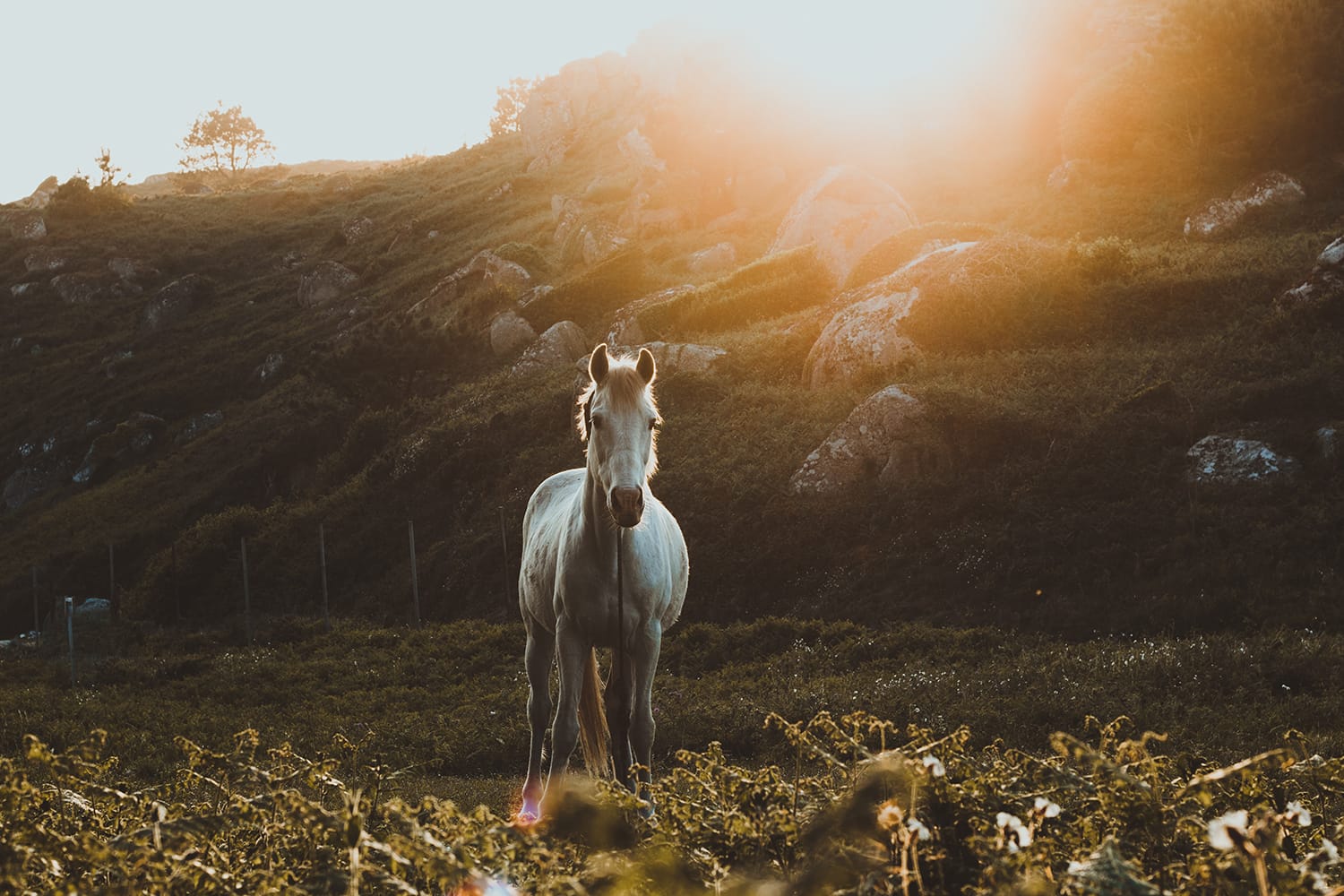
4. Use the Right Gear
For horse photography, proper distance also relates to having the appropriate gear.
A general tenet that horse photographers share is that a longer focal length of 70–200 is better for safety and can create stronger images. This type of lens allows the horse to become the focus of the photo while blurring out the background. Using a zoom lens provides the additional benefit of focusing on specific areas of your subject for greater detail.
If you’re taking images in a dusty enclosure or field, a simple UV or ND filter for your lens is also an invaluable tool.
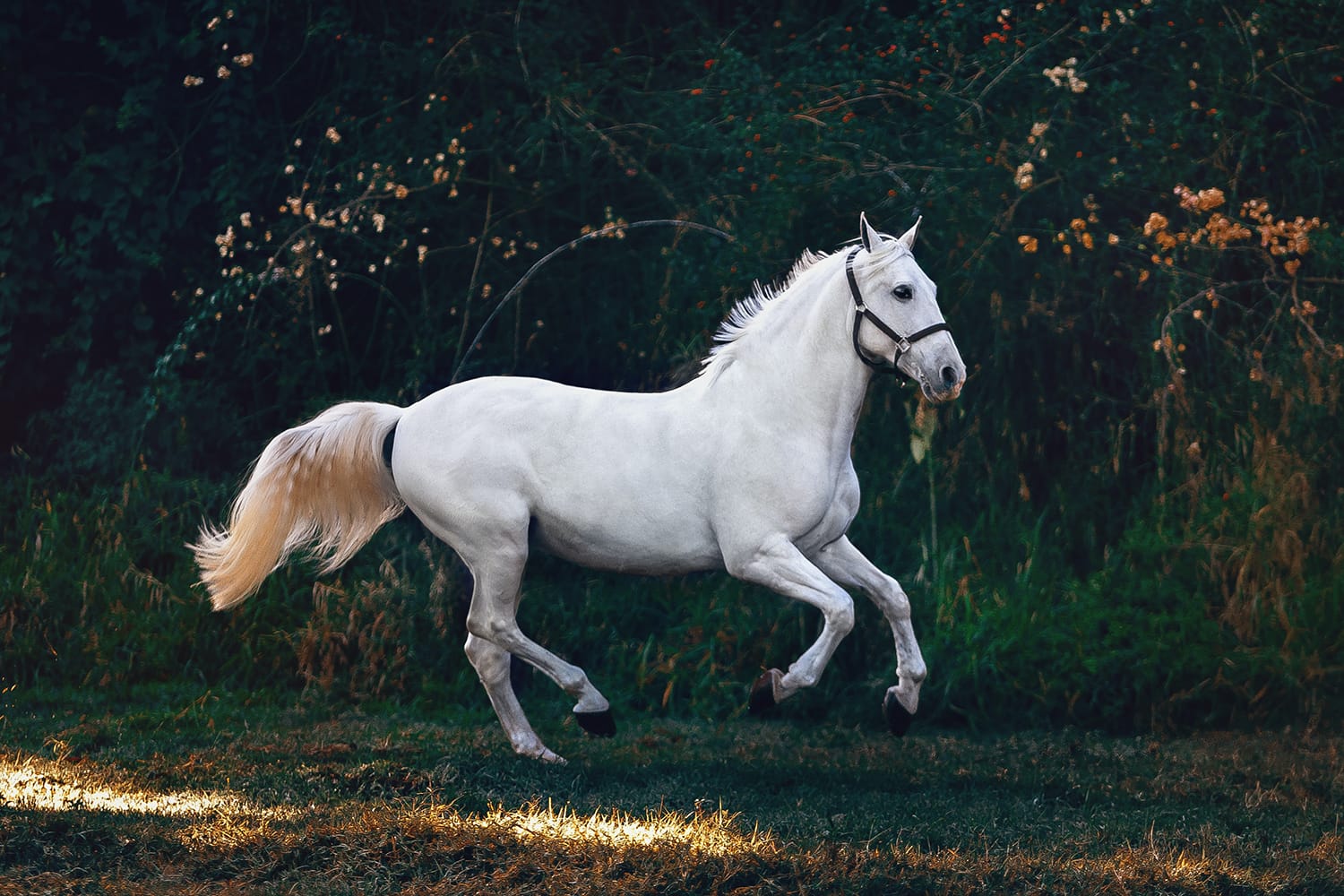
5. Don’t Use a Flash
For personal productions or smaller budget shoots, avoid using off-camera flash or speedlights altogether when composing portraits of horses.
Using a flash during horse photography will only increase the odds that a horse bolts or behaves unpredictably.
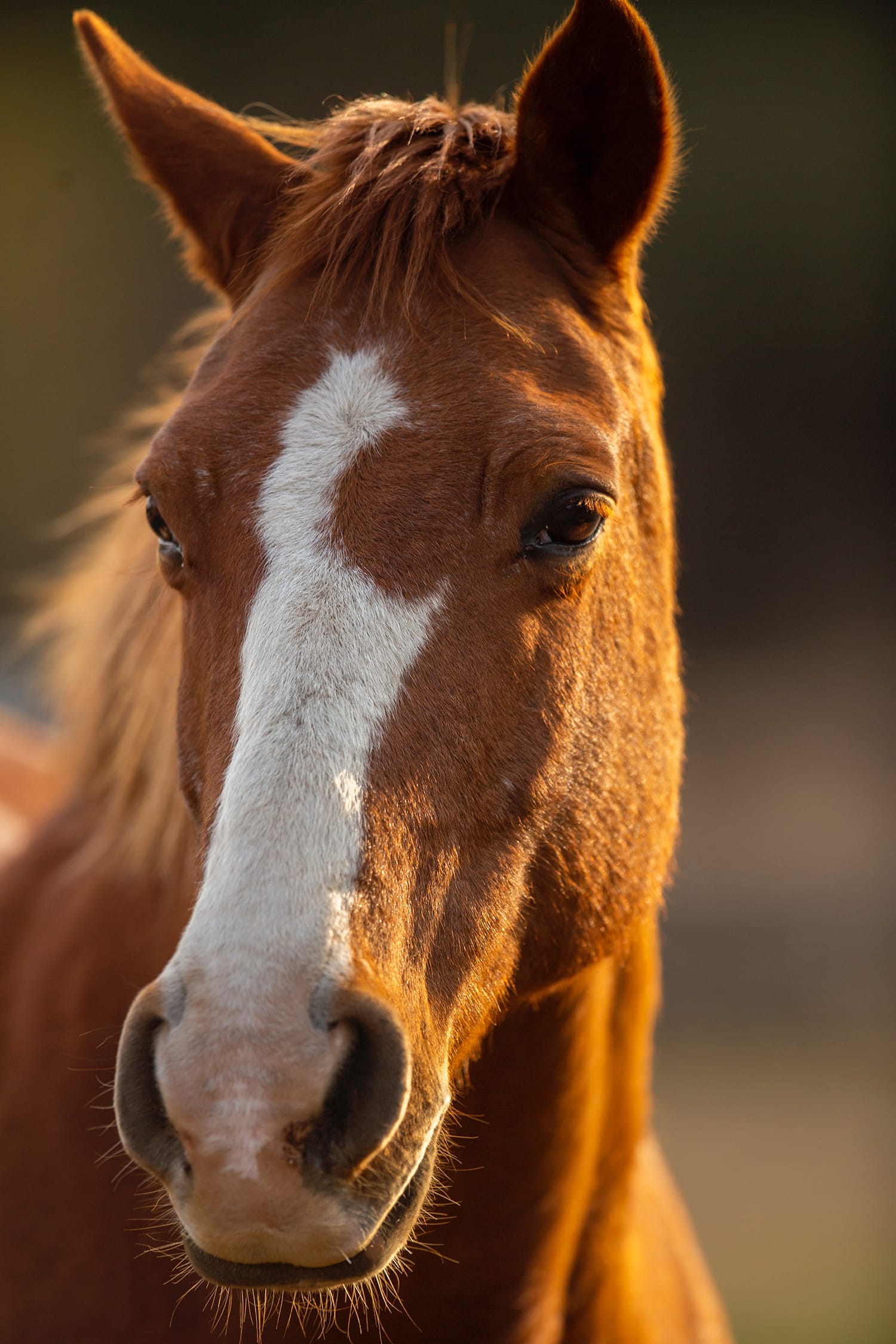
6. Prepare the Horse for the Shoot
Proper preparation for your shoot also extends to any equine needs.
Ensuring that the horse is groomed, fitted with proper footwear, and uninjured are all logistical concerns that should be discussed before the actual shoot date.
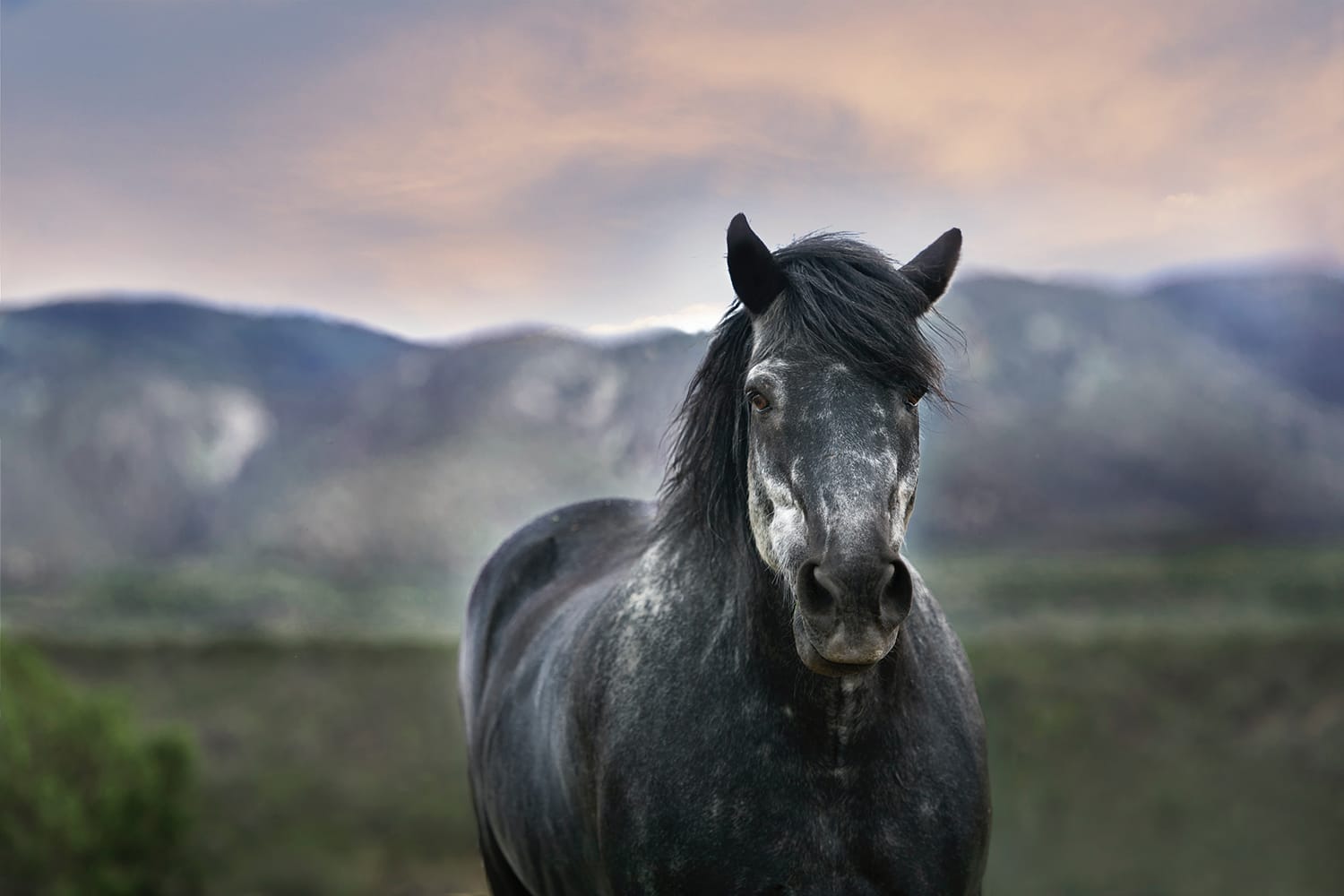
7. Use the Low-Angle Shot
Angles play an important role in capturing the beauty of horses. For instance, horses jumping or galloping can make for an impressionable photo that conveys confidence. To create this type of image, lie low and angle yourself so that your subject is above your line of sight.
When photographing a group of horses, the opposite effect is equally as flattering. Stand tall and angle yourself slightly down to capture the movement and speed of beautiful horse photography.
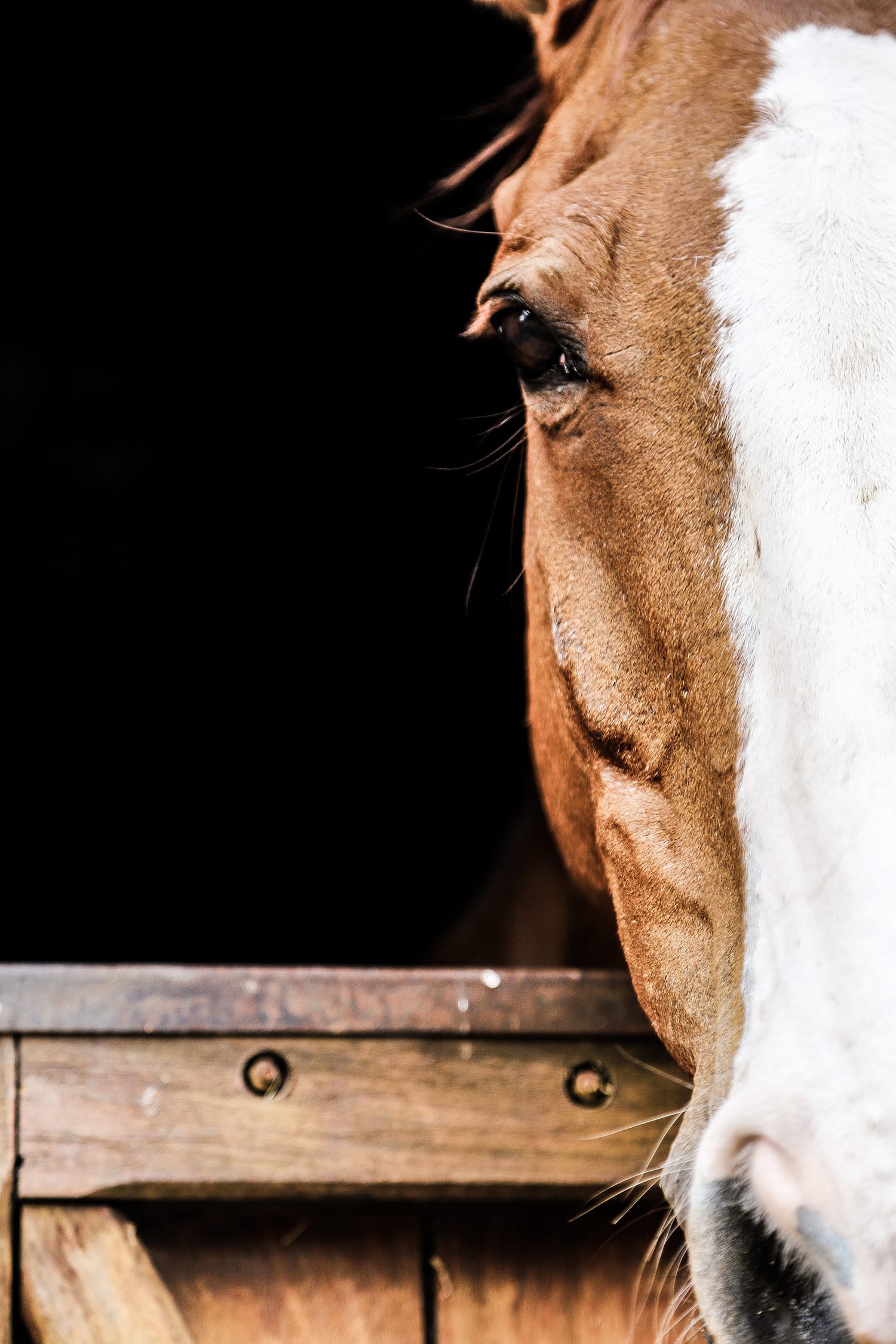
8. Take Photos With Ears Up
As a rule of thumb, sad horses make sad photos. Work with your equine partner to get your subject relaxed and alert.
The horse’s ears should stay up, with their feet ready for a light stroll, to maintain a sense of strength throughout the entirety of the set of images you’re creating.
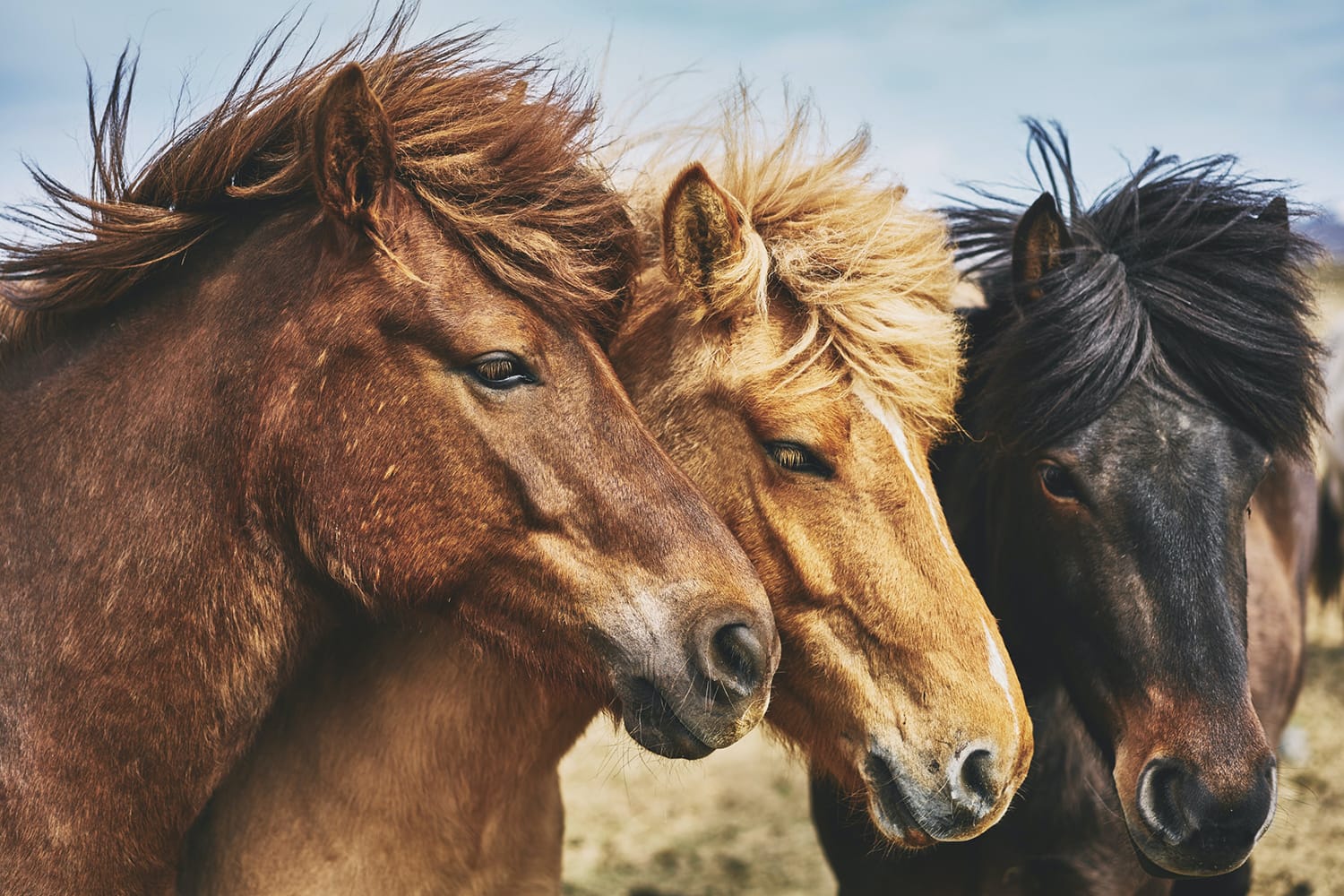
9. Switch to Burst Mode and Continuous Focus
If you struggle to capture photos due to erratic movement, switch your camera’s shutter to burst.
Better yet, enable continuous focus for a clean follow-through when tracking your equine subject.
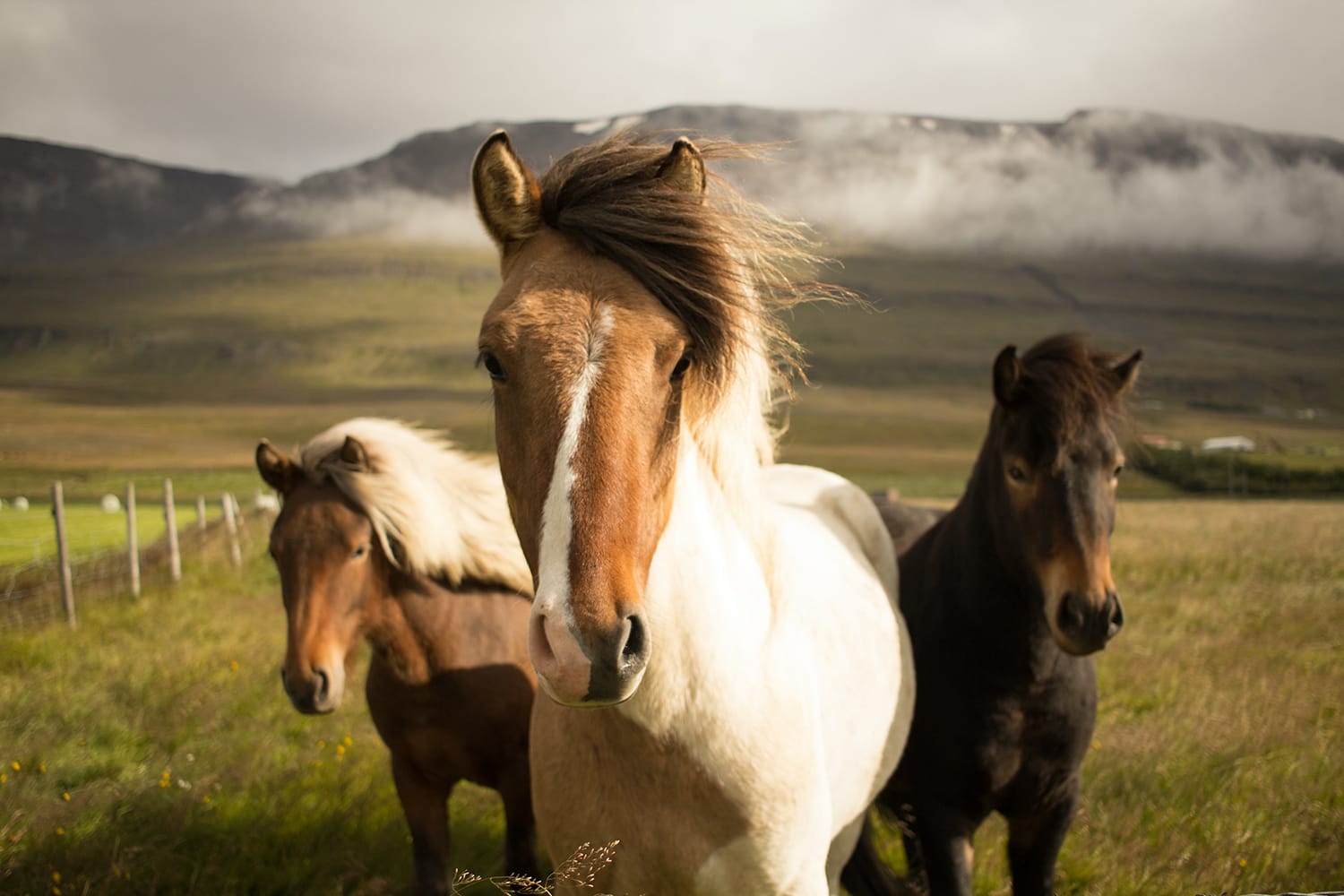
10. Understand the Best Lighting Conditions
When considering the best outdoor lighting for horse photography, soft or overcast conditions usually win out over direct sun. Direct sun can present awkward shadows, especially when dealing with larger subjects like horses. A soft light will allow you to have more control when post-processing, as your subject’s general color tone and details will be more malleable.
Like a standard portrait shoot, ideal horse photography conditions for portraits lie somewhere in the middle of sunny and overcast. You need enough lighting in your shoot to make the image interesting, but not too much where it creates a sense of distraction. Similarly, you want the light to be soft enough to be easy to adjust but not too gloomy that the image looks dull.
Finding the perfect sweet spot is an art, as well. Location scouting, talking to your equestrian trainer, and understanding what kind of image you want to create will go a long way in this department.
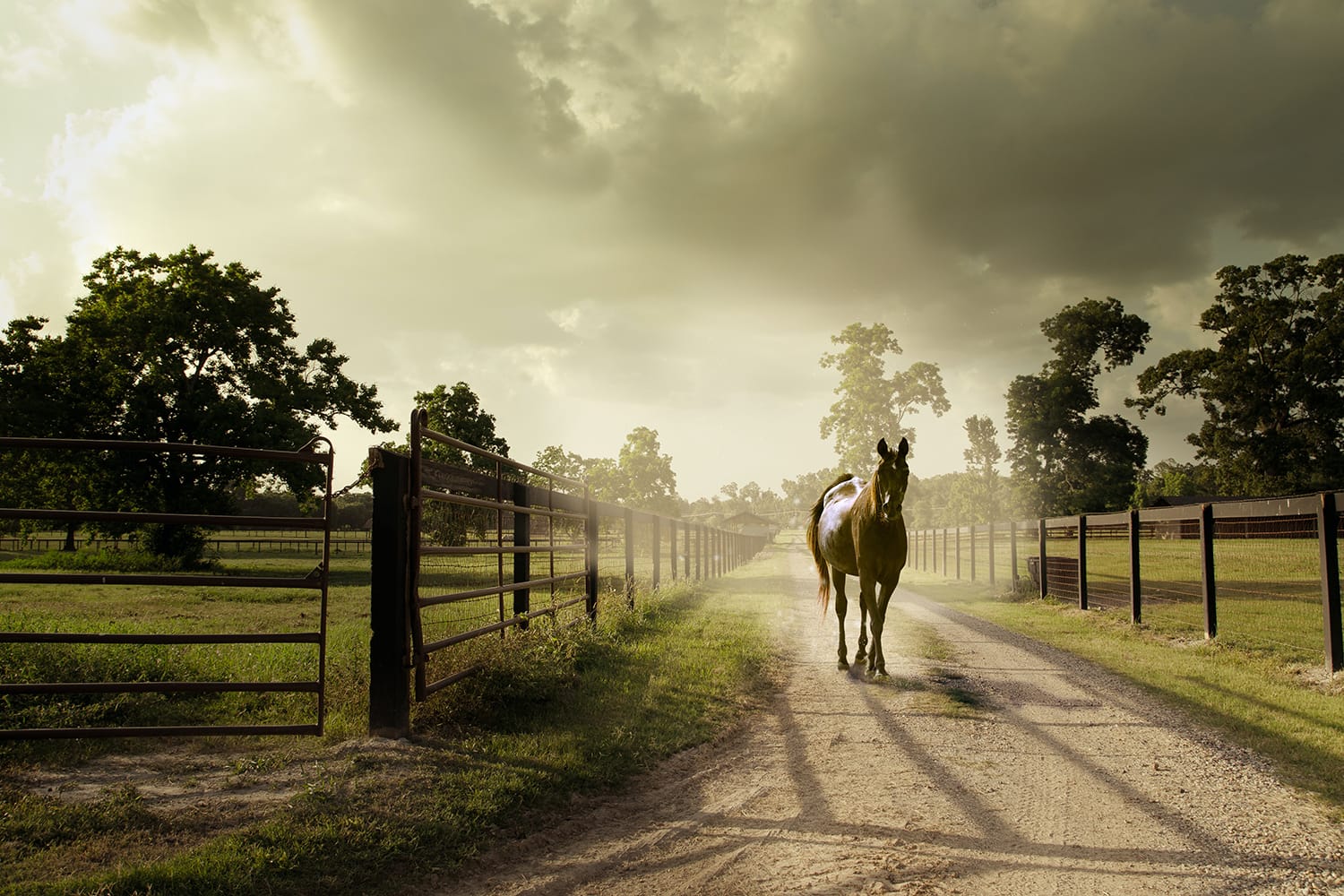
11. Take Action Shots
A quick guide to horse photography wouldn’t be complete without successfully discussing how to take pictures at competitions or the local rodeo. Keep the following in mind if you’ve been put in a position where you’re tasked with photographing an equestrian event.
Action shots are always the cream of the crop. Your focus for standard horse events should mainly revolve around creating stellar images like the ones we’ve described earlier in this article. Images of motion and action will sell the beauty of the horse to clients and customers and take priority in your portfolio.
Keep your shutter speed high, and your aperture low for a nice bokeh effect and ensure that your images don’t become destabilized. I would even recommend bringing a tripod or monopod along to aid in this endeavor.
Take more photos than you think you’ll need, especially when your first opportunity or job arrives. I would recommend taking more images than you typically shoot during a typical session because an event may have several key moments that you don’t want to miss. This fact is only compounded when you add in the additional hassle of photographing moving animals. At the very least, ensure that you have enough space on your memory card to accommodate several hundred RAW files.
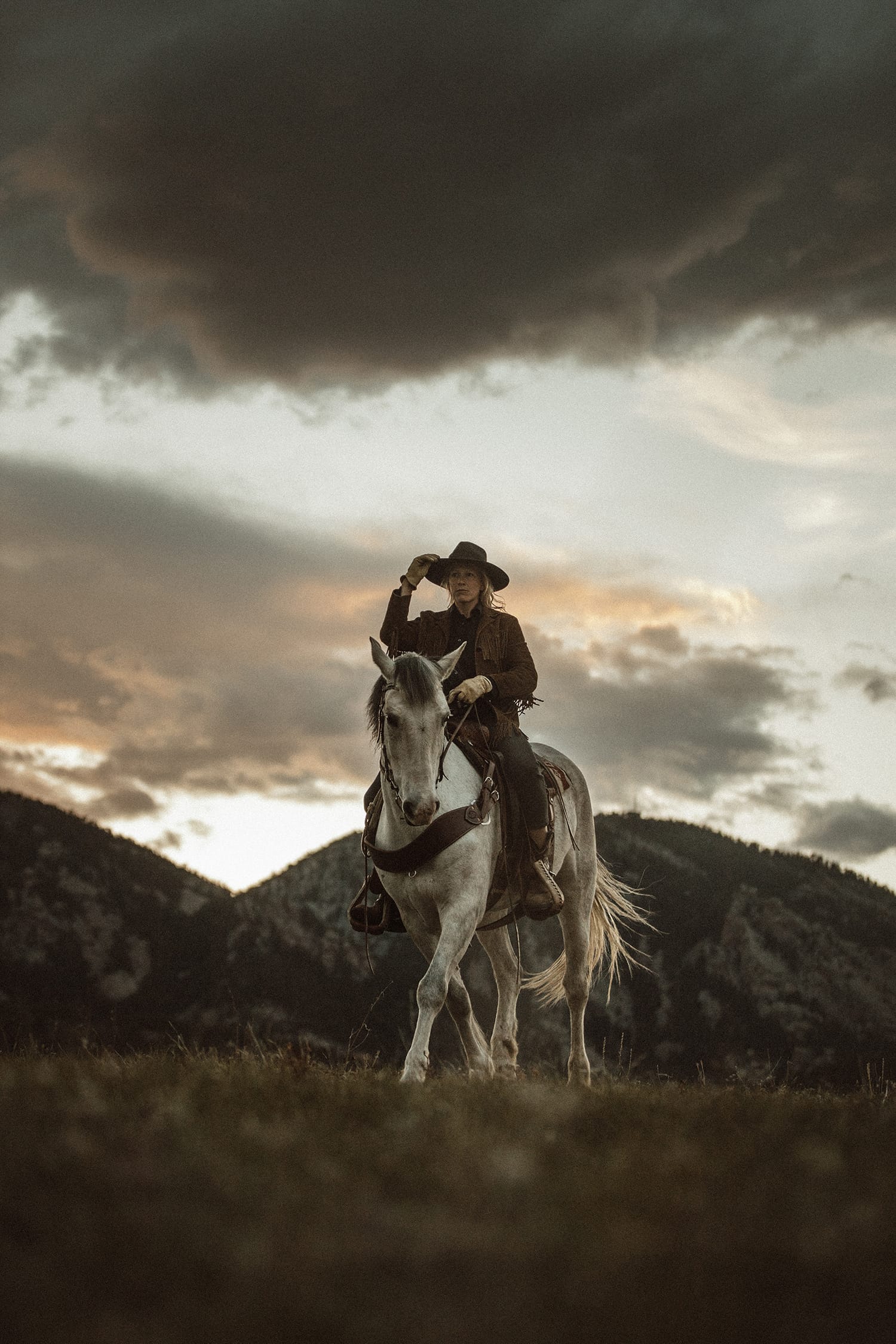
12. Take Portrait Shots
Although 70% of the images you take will be action-oriented, the other 30% should be behind the scenes. This could include quieter moments with the riders off the horse. Other ideas include preparing the horse for the stable or race, feeding or grooming the horses, or anything else that completes the before and after parts of your photographic story.
With proper procedures in place, horse portrait photography can be shot slightly closer to your subject, granted you have permission from their owner or equestrian handler. If you can get closer and find yourself taking photos, make sure that you change your camera’s shutter to its quietest mode. As mentioned earlier, precautions should be taken
not to scare or spook the horse. This is one of the easiest mishaps that can occur without foresight.
Conclusion
Beautiful horse photography is a fun and engaging experience that can take you out of your normal shoot routine and make for an exciting opportunity. Unlike portraits, you automatically have the added benefit of a horse trainer or assistant on set whom you can depend on when shooting.
They will likely have experience working with photographers. Much like many other photographic niches, it often takes a team to produce successful images. Keep this final tip-top of mind when photographing horses, animals, or any other subject. You’ll have a better chance at capturing the wild beauty of our equine friends.
